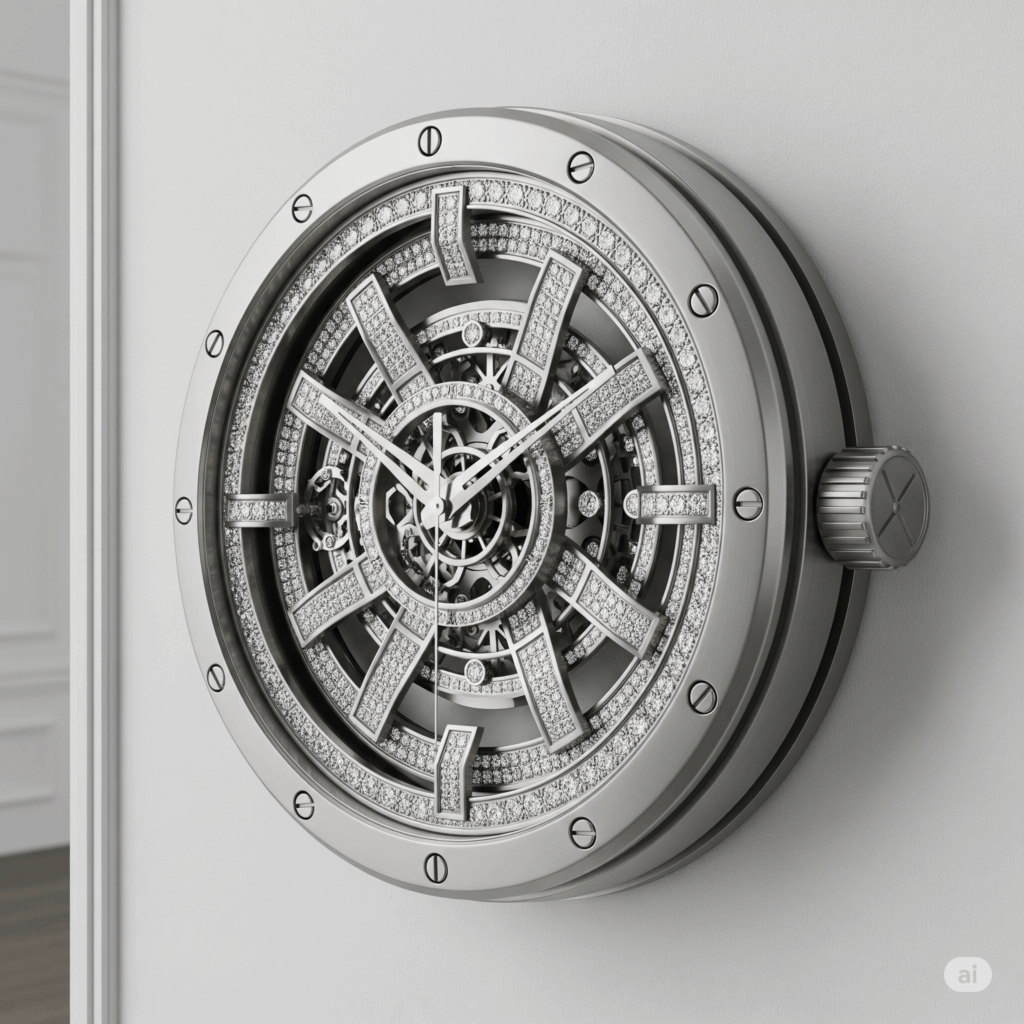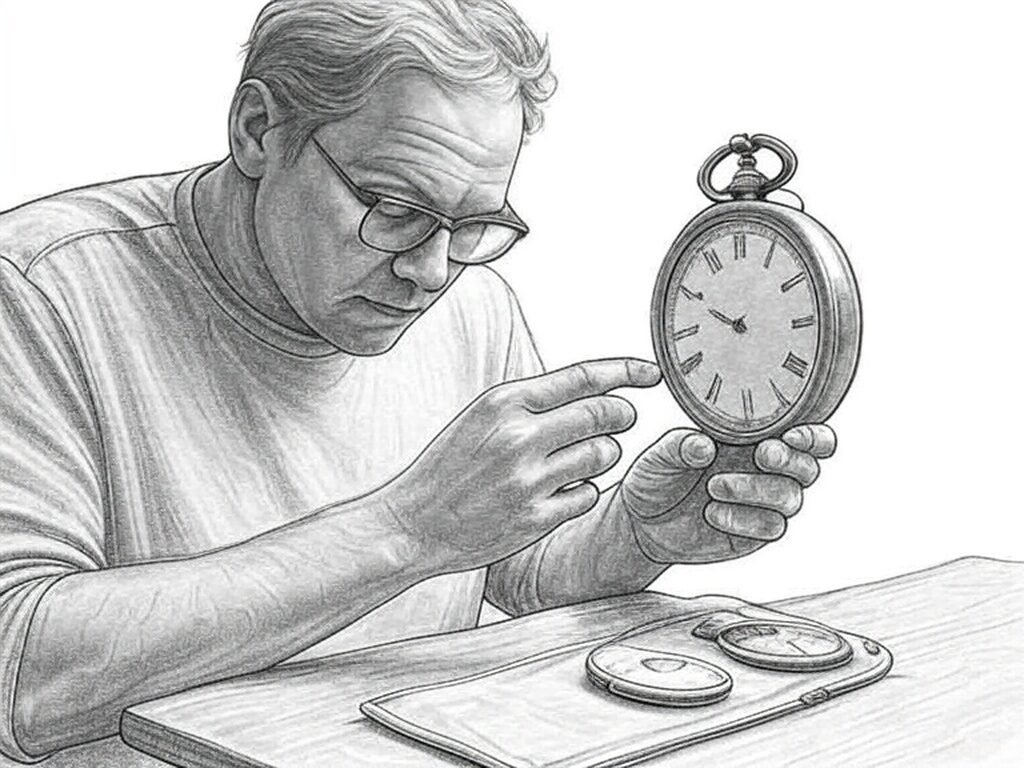Wall Clocks are mainly a timepiece made up of overlapping elements. Generally, these are circular or rectangular-shaped devices that are mounted on walls, with each one displaying the time through hour, minute, and sometimes second hands.
The clock face is held in place by a mounting mechanism. These clock faces are made from various materials like wood, metal, plastic, glass, and composite materials such as acrylic and ceramic.
Today, digital wall clocks dominate parts of Asia and Europe and are still referred to as clocks, not timepieces. One of the most significant drawbacks associated with wall clocks is that they deteriorate faster and thus need more frequent maintenance than built-in timekeeping systems integrated into smart home devices. That said, versatility is one of the reasons why wall clocks are amongst the most common home décor items in North America, as they adorn walls and add beauty and personality to a space.
Introduction
Wall clocks are a timeless and elegant way to add personality to any room in your home or office. An elegant wall clock can do more than just tell time—it can elevate the design of your space and serve as a functional piece of decor. With so many styles, materials, and movements to choose from, finding the perfect clock can feel overwhelming. Whether your taste leans toward modern design or classic elegance, the right wall clock will complement your style and bring a sense of harmony to your room. From bold statement pieces to subtle accents, wall clocks offer a unique opportunity to express your personality and enhance the overall decor of your space.
History and Evolution of Wall Clocks
The story of wall clocks stretches back to the 14th century, when the first mechanical clocks were installed in European monasteries to regulate daily routines. These early clocks were large, practical devices, often crafted from wood and metal, and designed to be seen and heard throughout the room.
As centuries passed, wall clocks evolved in both form and function, reflecting the changing tastes and technological advancements of each era. From ornate Baroque masterpieces to the clean lines of modern minimalism, wall clocks have adapted to countless styles and shapes. Today, wall clocks are available in a wide range of designs, making them a practical and stylish addition to any room, whether you prefer a classic look or a contemporary twist.

Branded Wall Clocks
Branded wall clocks are amongst the most common types used in the United States. However, factory-manufactured branded clocks are a common timepiece, especially in residential homes. In Europe, these clocks are referred to as designer timepieces or signature pieces and are far more common types of wall clocks.
The upside to branded wall clocks is that they are cost-effective, easy to install and can last for up to thirty years if taken care of and positioned correctly. Plus, they are often repairable. Branded wall clocks are currently available in numerous styles and across a spectrum of designs. There is a wide variety of brands offering wall clocks, catering to different tastes and preferences, from luxury and modern to antique styles.
Factory-produced clocks though artificially manufactured, benefit from the precise engineering that effectively ensures accurate timekeeping. On the other hand, artisan clocks are protected by the craftsmanship of their handmade construction. However, the mechanisms in both types of clocks can deteriorate over time with constant use and exposure to temperature fluctuations; the gears may wear down. This makes branded clocks more prone to failure, similar to mass-produced timepieces mainly if maintenance isn’t routinely performed. With proper care, branded wall clocks are known for their longevity, maintaining both function and appearance for many years.
The wear of internal mechanisms can eventually cause the branded clock’s hands to start sticking, and the clock face may fade, exposing the mounting hardware underneath. It is only a matter of time before the hardware is compromised that timekeeping will start becoming inaccurate, resulting in complete failure if not addressed in time. For many branded wall clocks, replacement parts are readily available, making repairs and ongoing maintenance more convenient.
Customized Wall Clocks
Now there are two main types of customized clocks: custom wall clocks, which include personalized and bespoke options. Bespoke clocks are often larger and more detailed compared to personalized ones. Many bespoke clocks are handcrafted to meet specific customer requirements, ensuring each piece is unique. The primary difference apart from how they look is how they are made. Personalized clocks are usually based on existing templates, but bespoke clocks are created from scratch. The process of creating a bespoke clock involves working closely with artisans to design and assemble a truly one-of-a-kind piece. That’s why bespoke clocks have more character since they are designed according to the customer’s specific requirements instead of being adapted from a standard model.
It is worth pointing out that customized wall clocks and even personalized wall clocks have long been attributed as expensive luxuries, to the point where they are uncommon in various places, especially in budget-conscious households. However, the same is true for other potentially premium home décor items that can significantly impact interior design.
Custom wall clocks make thoughtful gifts for special occasions such as anniversaries and weddings, capturing cherished moments and serving as lasting keepsakes. Adding a favorite picture to a personalized wall clock makes it a unique and memorable gift that stands out. Receiving a personalized wall clock can bring a genuine smile to the recipient’s face, making the occasion even more special.
The latest digital customization techniques and on-demand production of personalized wall clocks now means that they bear a moderate price point, and it is possible to achieve a unique aesthetic when used with a specific home design theme. This puts them on par with mid-range branded clocks and luxury timepieces in terms of decorative appeal.
Customized clocks have been used for decades across the world in places like Western Europe, North America, and Asia. That said, today, these are considered an accessible alternative to other higher-end types that offer exclusivity. However, they are still seen as offering more personal expression per square inch compared to other types of clocks like high-end types of branded timepieces.
Specialty Designer Wall Clocks
Specialty designer wall clocks are also referred to as luxury timepieces; the latter is a term used outside the US. While relatively expensive, designer wall clocks can last for up to 100 years! They are considered to be as valuable as antique furniture in some ways. However, they can last around forty to fifty years, provided the clock is well maintained. Designer clocks may appreciate in value over time, and it is possible to auction them mainly by transferring them from one owner to the next. In other words, they can become heirlooms!
Mass-produced wall clocks in comparison can’t be valued in this way, since with common timepieces they are often replaced rather than restored.
One of the most common reasons for failure with this timekeeping system is that the designer clock’s mechanism will become damaged and stop functioning properly. This leads to small inaccuracies in time measurement.
The other common reason for their failure is when they are dropped. It is usually the lower half of the designer clock that may break after falling loose, leaving a damaged case. Usually, the small, highly stressed area around the hanging mechanism leads to the clock falling. Worst case scenario, the clock face will crack, or it may be shattered.
The most common method of repairing designer clocks is to apply what’s referred to as ‘restoration’, a specialized service offered by horological experts. This works as a repair because it refurbishes the mechanisms back to working order, or they may be sent to manufacturers pre-emptively during warranty periods.
When designer clocks are bulky, the mounting could start to fail. This is often followed by damage to the wall surface, which is usually a result of inadequate installation in the first place. For large wall clocks, it is especially important to use appropriate hardware and anchors that can support the weight of the clock to ensure secure hanging and prevent damage. You will want to use proper mounting hardware which will last as long as the clock.
Plus, modern designer clocks can be programmed with various features and are available in multiple styles. When selecting a designer clock, consider the frame style and color, as the right frame can enhance the clock’s aesthetic appeal and help it complement the room’s decor and fixtures.
Materials and Movements
When selecting a wall clock, the choice of materials and movement can greatly influence both its appearance and performance. Premium materials like solid wood and high-quality glass lend an air of elegance and sophistication, while metal frames can add a modern or industrial touch to your decor. The movement inside the clock is equally important: mechanical wall clocks, with their intricate gears and traditional charm, appeal to those who appreciate craftsmanship and history.
Quartz wall clocks, powered by batteries, are known for their accuracy and low maintenance, making them a popular choice for busy households. For those who favor a sleek, modern look, digital wall clocks offer advanced features and a minimalist aesthetic. By considering both the materials and the movement, you can find a wall clock that perfectly matches your style and enhances the charm of your room.
Placement and Decorating Tips
The placement of a wall clock can transform the look and feel of your space. To create a striking focal point, consider hanging a large wall clock above a mantel or on a feature wall. For a more subtle effect, incorporate a smaller clock into a gallery wall alongside art and photos, adding both function and visual interest.
When choosing a spot, think about the angles and lines of the room—hang the clock at eye level for easy viewing and to maintain balance within the space. Match the clock’s style to your existing decor: a modern design clock pairs beautifully with contemporary furnishings, while a classic clock enhances traditional rooms. With thoughtful placement and a keen eye for design, your wall clock can become a functional work of art that elevates the personality and harmony of your room.
Promotional Devices: Wall Clocks as Marketing Tools
Wall clocks aren’t just for telling time—they can also serve as powerful promotional devices for businesses. Customized wall clocks featuring your company logo or a personalized message make unique and practical gifts for clients, employees, or partners.
Personalized wall clocks can help reinforce your brand identity every time someone checks the time, creating a lasting impression of elegance and functionality. Whether displayed in an office, lobby, or conference room, a branded wall clock is an amazing way to showcase your business’s personality and values. With options to customize the design, color, and message, you can create a promotional tool that is both functional and stylish, helping to elevate your brand and make your business stand out in any space.
Final Word About Choosing Wall Clocks
While there are other types of wall clock designs, these are by far the most commonly used in North America. That said, the type of timepiece you choose mainly depends on your budget and aesthetic preferences.
Explore different stores, both online and offline, to find the perfect wall clock for your house. Wall clocks are available in a variety of colors, including blue, green, and pink, allowing you to add a pop of color to any room. A well-chosen wall clock complements your decor and brings life to your living space. Be sure to pay attention to the details of each clock, such as materials, features, and warranty, before making a purchase.
Factory-manufactured branded clocks are by far the most common with specialty designer pieces being ones that are rarely used in average North American homes. Plus, if you’re considering integrating with smart home systems, it is worth choosing a timepiece that is compatible with your technology without compromising its visual appeal.

